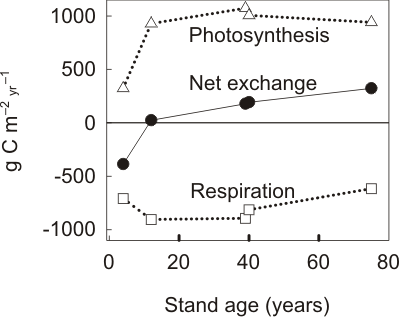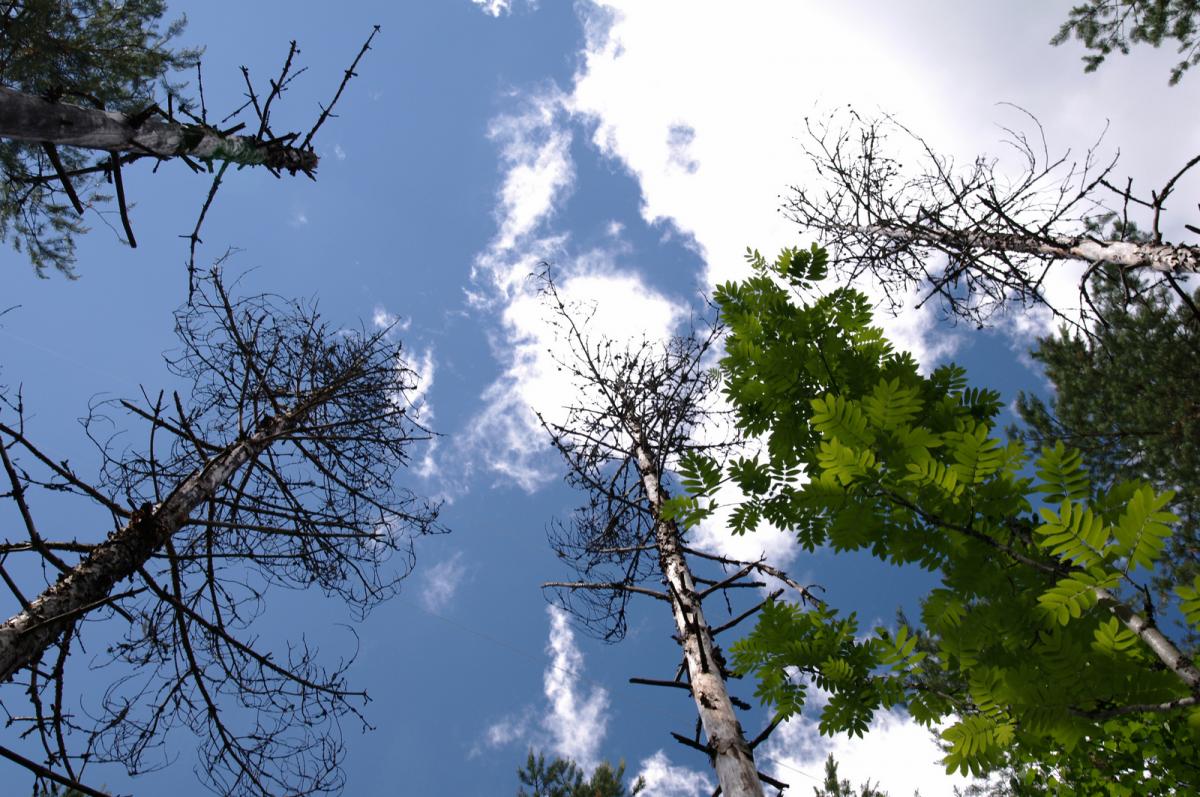Species composition in forests is mainly driven by climate (which determines air temperature), and by latitude (which determines light intensity). However, natural plant communities influence the present environment as well. Succession describes these natural changes in an ecosystem. Plant species, especially trees, change the air humidity, soil moisture, light, nutrient and soil conditions. Therefore, dominant species at the ground level vary over the course of time. It is generally believed that environmental variability, such as fluctuations in temperature, energy exchange and soil moisture, is the highest in early succession, because in later phases, fluctuations are buffered by the vegetation itself. Succession usually describes the changes in plant species while fauna adjusts to these changes.
Primary succession begins when plant species colonize an environment without previous vegetation, such as lava flows or postglacial rebound. Secondary succession is a process started by disturbance that reduces or removes an already established ecosystem (e.g. a forest). Disturbances can be anthropogenic, such as logging. Typically small natural disturbances are caused by snow, disease and pest infestation; while fires, windstorms and severe flooding usually result in large-scale changes. The occurence of natural disturbances is irregular, creating a mosaic of differently aged structures varying in species composition.
In the early phases of succession, pioneer species colonize unvegetated land and initiate the chain of succession. The dominant species are herbaceous, fast-growing and short-lived herbs and grasses, which are especially adapted to the extreme variations in their environment. These species have high leaf-area-based photosynthesis but due to overall lower leaf area, the photosythesis is not as high as in a mature forest. In addition, if there is a lot of decaying organic matter such as branches and stumps, forests act as sources of carbon dioxide. Later in succession, trees begin to dominate and the species at ground level change to shade-tolerant, slow-growing and evergreen species, such as dwarf shrubs and feather mosses with low photosynthetic rates. As the tree population and total leaf area (LAI) increases, the forest turns into a sink of carbon.
The idea that succession ends in a climax community, where species composition changes no longer occur in time, has a long history. However, currently it is commonly believed that a steady state is never reached, since matured forests also face disturbances which act on varying spatial and temporal scales, frequently removing part of the previous plant community.
Read more about the CO2 emissions and fixation during succession: Kolari, P., Pumpanen, J., Rannik, Ü., Ilvesniemi, H., Hari, P. & Berninger, F. 2004. Carbon balance of different aged Scots pine forests in Southern Finland. Global Change Biology 10: 1106–1119.



